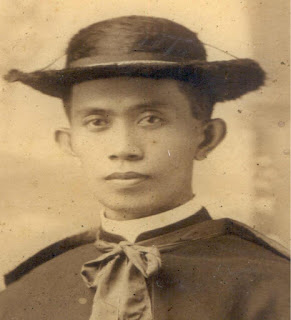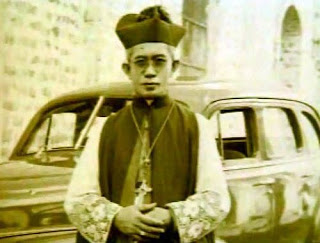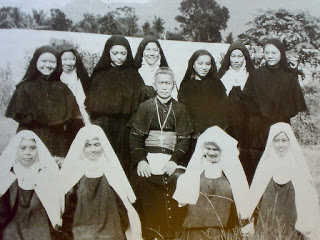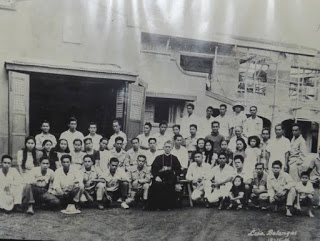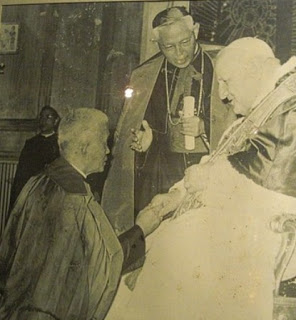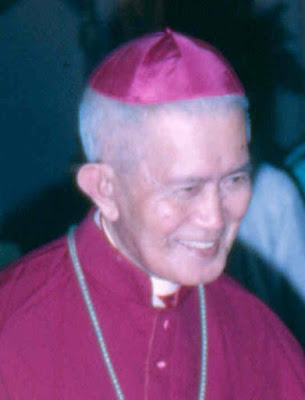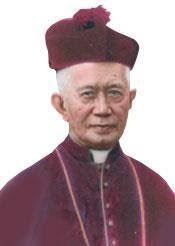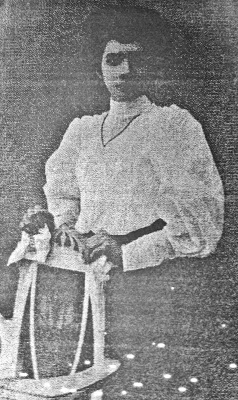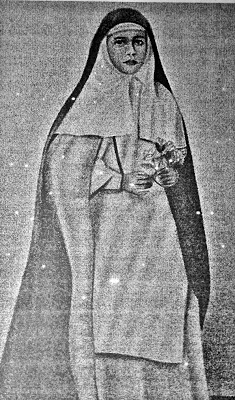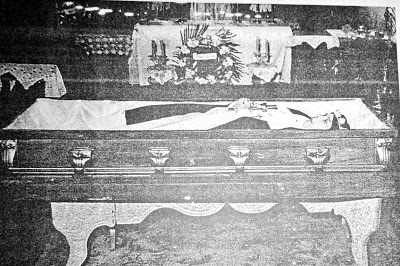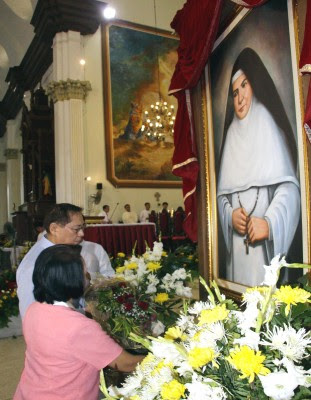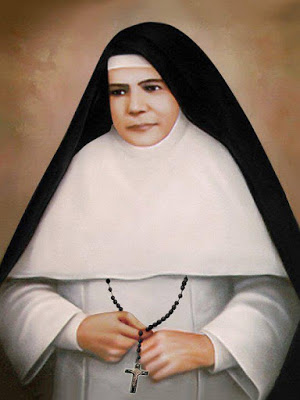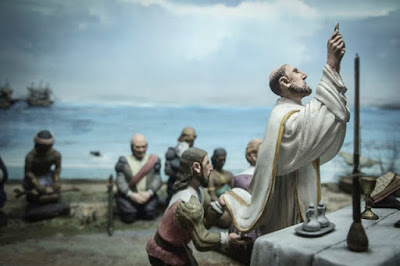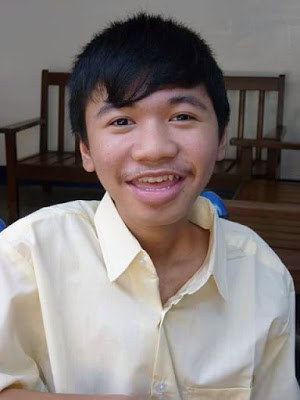
With the recent news of a new Servant of God was added to the roster of soon to be Filipino Saints, many asked who was this teenage Filipino that will soon join the ranks of our own Holy Men to be exalted in our altars.
It is the proper time to get to know more who is Servant of God Darwin Ramos, who lived a impoverished life, then found hope and suffered a grave illness yet he still kept his faith alive and inspired many which can be compared to the likes of St. Anna Schaffer and Blessed Alessandrina de Costa.
The Family life of Darwin
Darwin Ramos was born on December 17, 1994 in Doña Marta Maternity Hospital, in Pasay City. Darwin spent his early years with his family on P. Villanueva St., Pasay City. Their house was in a slum between EDSA and Libertad stations (elevated rail transport). Darwin was the second child of a very poor family. His mother worked as a laundrywoman to earn some money to feed the whole family. His father was an alcoholic. In order to help his family, Darwin became a scavenger (waste picker) in the street, with his sister Marimar who was two years younger. They spent their day going through garbage to recover plastic waste which they sold. Unfortunately, they did not go to school because the search for food was more important.

The beginning of his Cross
The initial symptoms of what will later be diagnosed as Duchenne muscular dystrophy appeared. This began as weakness of the legs. Then, his mother noticed that Darwin was stumbling increasingly. Progressively, Darwin could no longer stand and his muscles weakened.
Poverty pushed the family to live on the street. His father took advantage of Darwin’s illness and he would position Darwin every morning at the Libertad station to beg from passers-by who took pity on the boy. In spite of the terrible shame felt by Darwin, hundreds of pesos fell into his hands which he held out painfully. His father was taking a large portion of the money to buy alcohol. Darwin did not say anything as long as a sufficient portion was used to feed his brothers and sisters.
A ray of hope
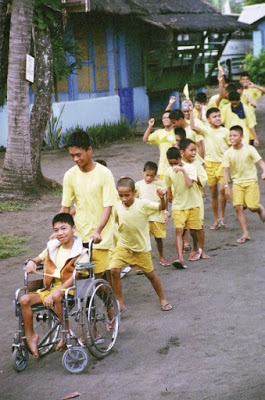
In 2006, a group of street educators of the Tulay ng Kabataan Foundation, which was already regularly meeting with Darwin for a few days at the Libertad station, were able to fetch him. Darwin saw that the Foundation could help him and he agreed to be fetched. Darwin could no longer stand up but he could use his hands and remain seated without assistance
At the Tulay ng Kabataan Foundation, Darwin lived with children with special needs caused by different disabilities. He discovered the Catholic faith. He was baptized on December 23, 2006 at the Shrine of Mary, Queen of Peace, Our Lady of EDSA (EDSA Shrine). One year after, he received First Communion and Confirmation from the hands of the Auxiliary Bishop of Manila, His Excellency Broderick Pabillo., D.D., at the chapel of the Major Seminary of San Carlos, Guadalupe.
A Mission of Suffering
Darwin suffered more respiratory distress that require several hospitalizations. Despite of his painful condition, he uplifted the staff and the children at the Foundation by the way he lived with his illness. He was constantly repeating “Thank you” and “I love you.” He never complained and always smiled even during difficult times. He was attentive to all and showed support to the other children at the Foundation in their trials. He had the habit of offering his sufferings. When he was speaking of his illness, he did not talk about his myopathy but of what he was calling it his “mission.” Darwin developed a deep love for Christ that there isn’t a day passed that the young boy did not take time out to entrust himself to Jesus. A caregiver from the Foundation testified: “One day, when Darwin was feverish, he insisted to be helped in getting out of bed to join the others in the center so that he could lead the evening prayer. It was Jesus before anything else.”
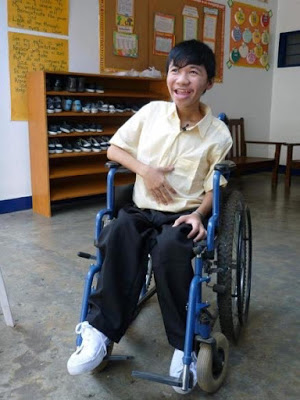
Darwin’s Holy Week
On Sunday, September 16, 2012, the nurse of the Foundation decided to bring Darwin to PCMC (Philippine Children’s Medical Center, Quezon City) because he had difficulty in breathing. When the priest in charge of the Tulay ng Kabataan Foundation arrived at his bedside, the first thing that Darwin did was to excuse himself for causing him worries. Darwin added as he breathed laboriously: “Thank you for everything Father.” Then began what some would call “Darwin’s Holy Week”:
On Monday, Darwin was intubated. He was not able to talk anymore. It was only possible to lip-read him, but he was able to write in a notebook.
Darwin then received the anointing of the sick. On Friday, he looked peaceful and had a big smile. He wrote his 2 last sentences in a notebook: “A huge thank you” and “I am very happy.” as a sign of a battle won. Darwin, intimately united with the Lord in his suffering, was already sharing the joy. On Saturday, Darwin entered into a great silence while remaining conscious. Darwin died on Sunday, September 23, 2012, at sunrise, at Philippine Children’s Medical Center, Quezon City. The funeral mass was celebrated in a full church, attended by all the children of the Tulay ng Kabataan Foundation. Darwin is buried in the Pasay City Cemetery.
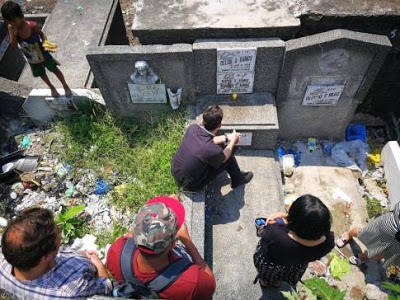
The Cause of beatification and canonization
In the Philippines, the memory of Darwin’s life remains in the minds of many. People continue to gather at his tomb in Pasay City Cemetery. In France, Father Matthieu Dauchez wrote a book in 2015 entitled “Plus fort que les ténèbres” [Stronger than Darkness]. In 2016, Daniel-Ange de Maupeou d’Ableiges wrote another book entitled “Prophètes de la Beauté” [Prophets of Beauty] which first pages are dedicated to the life of Darwin Ramos.
Many of readers were touched by this example of Joy and Love through disease and suffering, while Darwin is only an adolescent, and testified of the graces received by his intercession: “In spite of the disease, it is his joy of living and his luminous glance that will have touched more than one. Darwin has left the image of a young boy edifying with holiness, who despite his young age, quickly realized that his illness, much more than an irreversible ordeal, was none the less a mission… A mission guided by the One he loved so much to call his Friend: Jesus.”
In 2018, the “Darwin Ramos Association” requested His Excellency Honesto Ongtioco, Bishop of the Roman Catholic Diocese of Cubao, to initiate the Cause of beatification and canonization of Darwin Ramos. The “Darwin Ramos Association” on March 14, 2018 assigned Father Thomas de Gabory, OP, as Postulator. His Excellency Honesto Ongtioco confirmed this nomination by Decree of May 25, 2018. The Postulator officially addressed the written request (Supplex Libellus) to open the Cause of beatification and canonization of Darwin Ramos on June 20, 2018. The acceptance letter was signed on November 7, 2018. Father Robert T. Young, a Filipino Canon lawyer, has been nominated as vice-postulator.
On March 29, 2019, the Congregation for the Causes of Saints accepted and signed with Nihil Obstat the document for the Cause for the Beatification and Canonization of Darwin Ramos through it’s Prefect, His Eminence Angelo Cardinal Becciu in Rome. The Cause for his beatification and canonization was formally opened on August 28, 2019 – Feast of St. Augustine of Hippo.
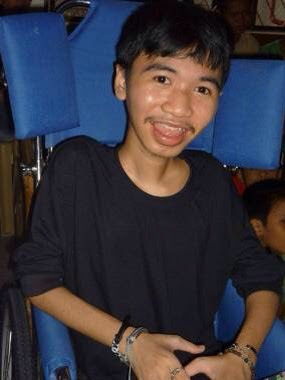
As we learn the inspiring life story of our new Servant of God, let us imitate his virtues and be the light in the midst of our national and personal darkness that we experienced as of this moment.
Before ending this blog post, here is the official prayer for the Beatification and Canonization of Servant of God Darwin Ramos
O God of all Joy, Father, Son, and Holy Spirit, you never leave alone those who are in a time of trial. We thank you for giving us, in Darwin Ramos, a street child, an illuminating example of Christian life. During his short life you gave him the grace of simple never-failing faith, of joyful hope in illness, of endless charitable concern for his neighbor. We pray you grant your servant Darwin glorification on earth so that young and sick people may find in him a master of Joy. Through his intercession, hear our prayer, (express it here). We ask this, through Jesus-Christ, our Lord, Amen.
Imprimatur:
Honesto Ongtioco, DD
Bishop of the Roman Catholic Diocese of Cubao
November 22, 2018
For any favors through the intercession of Servant of God Darwin Ramos, kindly log in to https://darwin-ramos.org/prayers/ or to the following address:
Tulay ng Kabataan Foundation Inc.
94 Kalayaan Ave., Quezon City
References:
Matthieu Dauchez, “Plus fort que les ténèbres [Stronger than Darkness]”, Paris (France), Éditions Artège [fr], 2015, 168 p. (ISBN 9782360403363)
Daniel-Ange de Maupeou d’Ableiges [fr], “Prophètes de la Beauté [Prophets of Beauty]”, Montrouge (France), Éditions du Jubilé [fr], 2016, 236 p. (ISBN 9782866795658), pp. 25-38.
“Ma Figure Spirituelle, Darwin Ramos”, La Vie, 29 avril 2015.
Alexandra Chapeleau, “La mission de Darwin Ramos: Plus fort que les ténèbres”, retrieved on fr.zenith.org, March 20, 2015.
Archives preserved by the Postulation of the Cause of Beatification and Canonization.
Photos courtesy of the Darwin Ramos Foundation.


